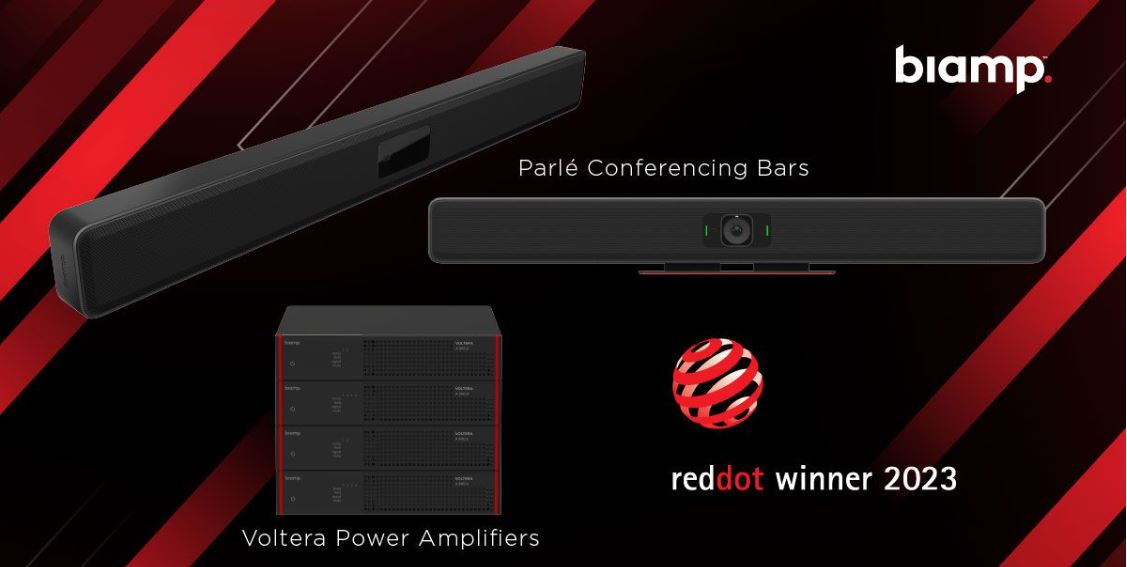Beautiful, functional design isn’t just skin-deep; it points to a commitment to a better, more satisfying experience
By Joe Andrulis, Executive Vice President of Corporate Development at Biamp
Behind every piece of equipment, there’s a lot of thought and intention that goes into how it looks, feels, functions, and is experienced by the user. That process is known as industrial design, and due to the maturation of the pro AV market, it’s become more valuable than you might realize. Industrial design can help integrators and other AV professionals zero in on solutions that address needs beyond merely what’s at the top of their priority list.
First, industrial design isn’t just product design. Of course, a well-designed product is functionally effective as well as aesthetically pleasing, but industrial design goes beyond that—it encompasses how it feels to get that product to function. In the same way people don’t buy ugly kitchen tile, even though any tile will do, an aesthetically pleasing solution contributes to a positive experience for users in the space.
In pro AV, multiple questions come up during the development process that inform product functionality: How does a user experience and interact with it, and what’s their sense of satisfaction with regard to how well that product serves them? The answers to these questions are the heart and soul of what users think about any given product, and this exercise is an invaluable part of creating and achieving a positive user experience in every pro AV application.
Perception is reality. While appearance, feel, and functionality shapes how a customer feels about a product based on that surface-level information, it also says a lot about the manufacturer and the overall brand. A company that cares about the appearance of a product can give an integrator or decision maker much more confidence in the overall brand and how other unseen product details are handled.
Attention to industrial design also demonstrates a greater awareness of and respect for the user. Of course, identifying the user is a much more complex process in the pro AV industry than it is in the consumer tech world. Pro AV manufacturers have invested a lot of time, energy, and expertise in understanding a product’s journey to arrive at a design that meets the needs of all the people who will interact with it: designers and consultants, integrators, programmers, AV tech managers, IT professionals, and of course, end-users. A high-quality pro AV solution should be designed for every user it will encounter and offer continuous, effective performance and functionality thereafter.
With integrators playing perhaps one of the most critical roles in the product journey, manufacturers are constantly asking themselves what they can do to make a product more integrator-friendly. Although the design of the box might not change much, designers might implement internal changes that impact the speed in which it’s installed, updated, or repaired in the field.
At Biamp, our design process always starts with the product journey. We have an understanding of who is going to use the product, and how they’re going to experience it. We come up with several design concepts that we narrow down to the one that reflects users’ pain points and the rigorous requirements with which every solution must be evaluated before it’s installed. We spend a tremendous amount of time and energy building designs that we think most strongly contribute to a great outcome.
Great examples of our most recent industrial design efforts are our Parlé Video and Audio Conferencing Bars and the Voltera line of power amplifiers, which both won the 2023 Red Dot Awards in industrial design. The awards represent the best of the best in design, innovation, and craftsmanship. Judges are made up of 48 designers, design professors and specialist journalists from 23 countries who evaluate products on degree of innovation, ergonomics, product periphery, functionality, durability, self-explanatory quality, formal quality, ecological compatibility, and symbolic and emotional content. Both of these appliances reflect the highest attention paid to the product journey: They are small and attractive and can be configured and installed anywhere easily, allowing them to fit in modern conference rooms or collaboration spaces while delivering an exceptional audio experience to end-users.
Industrial design is the tiebreaker, and the dealbreaker. As the market matures, there are increasingly more products from which to choose that will get the job done, but there is often one product that stands out from the crowd. That product will be one that addresses the project’s system requirements, looks and feels good, and eliminates challenges. It shows when a manufacturer has spent time, effort, and money ensuring that the characteristics and functions of the product meet those standards. And it’s those last-mile factors that will create an extraordinary AV experience, from beginning to end, for integrators to end users.
Learn more about the many extraordinary AV solutions from Biamp.
